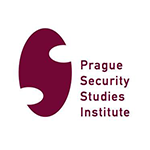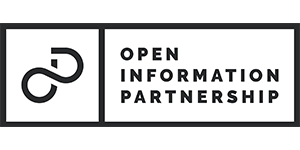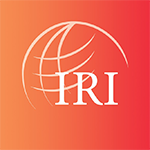Hidden malign domestic and foreign “grey zone” media influence in the Czech, Hungarian and Serbian election campaigns
Supported by the Open Information Partnership, Political Capital, and its partners, the International Republican Institute, Czech Prague Security Studies Institute and the Serbian European Western Balkans have conducted over a 6-months long media research into the domestic and foreign malign influence exerted over the political campaigns to the run-up of the 2021 Czech elections and the 2022 April elections in Serbia and Hungary. Our research results shed light on how clandestine disinformation campaigns carried out by the so-called “grey zone” media operated by both known and unknown political actors tried to influence key issues on the political agenda of the three countries and contributed to the Russia-led regional destabilization efforts in the information space of Central-Eastern Europe after the invasion of Ukraine.
Our research employed both qualitative and quantitative methodology to monitor and collect historical media data present on Czech, Hungarian, and Serbian “grey zone” webpages and Facebook pages, and other social media accounts between September 1 and October 31 in the Czech Republic, and the November 1 – December 31 period for Serbia and Hungary. Given the unexpected invasion of Ukraine by Russia on February 24, 2022, we also monitored narratives about the war between January 1 and March 1, 2022.
The quantitative dataset used in the analysis was generated using the SentiOne social media listening platform that allowed us to access homepages and public Facebook pages,’ groups’ data to conduct trend, sampling, statistical, and network analyses of media content production. For more on the methodology see please our reports below.
Disclaimer: The views and opinions expressed in this project are those of the researchers and do not necessarily reflect the views or positions of the Open Information Partnership or IRI.
Key findings
In Central-Eastern Europe, a so-called "grey zone" has emerged in the media, which tries to influence public opinion and pre-election political campaigns through hyper-partisan and sometimes even extremist – often anonymous or only seemingly “independent” – political communication, which utilises conspiracy theories and ignores the standards of ethical journalism.
What differentiates the “grey zone” media from the mainstream in most cases is a specific media strategy that attempts to mask or remove the original partisan sources of messages and not to rely on traditional media organisations to manipulate or hide authorship, editorial, or ownership background.
Research results have verified that the “grey zone” media played a significant, although slightly different, part in shaping key campaign issues before the elections in all three countries under review.
- In the Czech Republic, we could identify two different layers of the “grey zone” media. The first one is comprised of mostly inscrutable conspiracy or clickbait outlets, such as Pravý prostor, New World Order Opposition, and CZ24 News, established five to ten years prior, whereas a new kind of anti-vaccination media led by public faces and new anti-vaccination movements, such as Otevřeme Česko – Chcípl PES, TV Šalingrad, or Srdcem pro vlast, has sprung up since the start of the pandemic in 2020.
- The Hungarian “grey zone” ecosystem is made up of both pro-government and opposition media whose ties to some of parties, such as the leftist MSZP or DK, could be verified by investigative research. The network analysis based on the hyperlinks found in Hungarian campaign-related messages proved that the Hungarian grey zone network is ruled by anonymous pro-government media, such as Számok – a baloldali hírek ellenszere or Vadhajtások, and far-right anonymous media, such as Kuruc.info, as seen on the Hungarian graph of grey zone media below.
- The Serbian “grey zone” media is partly a direct result of the hybrid regime in which governmental forces try to expand their media outreach beyond their mainstream media empire in order to either promote the government or hurt the opposition, whereas some of the fractured opposition parties, movements and other actors attempt to create their own media, lacking a free and balanced media space. The pro-government grey zone media is made up of mostly anonymous hyper-partisan sources and “independent” GONGOs, trying to spread governmental propaganda under different brands, such as Pristojna Srbija or Srpska digitalna inicijativa.
In terms of narratives, the Serbian and Czech media produced mostly nationalistic or even extremist anti-West or Eurosceptic narratives, whereas the leftist or opposition Hungarian sources represented a more pro-Western position. The key issues addressed were the COVID-19 pandemic in the Czech Republic, the opposition to the establishment of the Rio Tinto lithium mine in Serbia or various conspiracy theories about “foreign agents of the opposition” in Hungary.
The war had a fundamental impact on the grey zone communication. We could observe the dissemination of the Kremlin’s tactical and strategic disinformation narratives, such as Ukraine committing genocide against ethnic Russians, NATO being the real aggressor, etc., about the war by the grey zone in Serbia or the Czech Republic. In Hungary, however, the pro-Russian communication was reserved for the rightist media, while the opposition outlets pointed out Russia’s responsibility for the conflict and supported the Western sanctions.
As a result, the grey zone in all three countries exhibited and relayed foreign autocratic influence, namely the Kremlin’s influence, through the use of local or international Russian mouthpieces, such as the Sputnik Srbija or Russia Today. Their stance could be explained on the basis of untransparent financing of these media, infiltration of foreign agents of influence, and by the anti-systemic (anti-West, anti-USA, Eurosceptic) ideology of most of sources of the grey zone ecosystem in the CEE.
Authors and contributors
Brussels
- Brady Hills, Senior Program Officer, The Beacon Project, International Republican Institute
- Adam Lelonek, Program Officer, The Beacon Project, International Republican Institute
Czech Republic
- Kristína Šefčíková, Project Manager, Prague Security Studies Institute
Hungary
- Lóránt Győri, Geopolitical Analyst, Political Capital
- Ákos Keller-Alánt, Investigative Journalist, RFE/RL
Serbia
- Nikola Burazer, Executive Director, European Western Balkans
List of publications
Summary report
- Shadow Forces: Hidden malign domestic and foreign “Grey Zone” media influence in Central-Eastern Europe (download as pdf)
Country reports
- Czech Republic: Anti-vaccination media on the rise (download as pdf)
- Hungary: Agents of influence (download as pdf)
- Serbia: Beyond absolute control (download as pdf)






